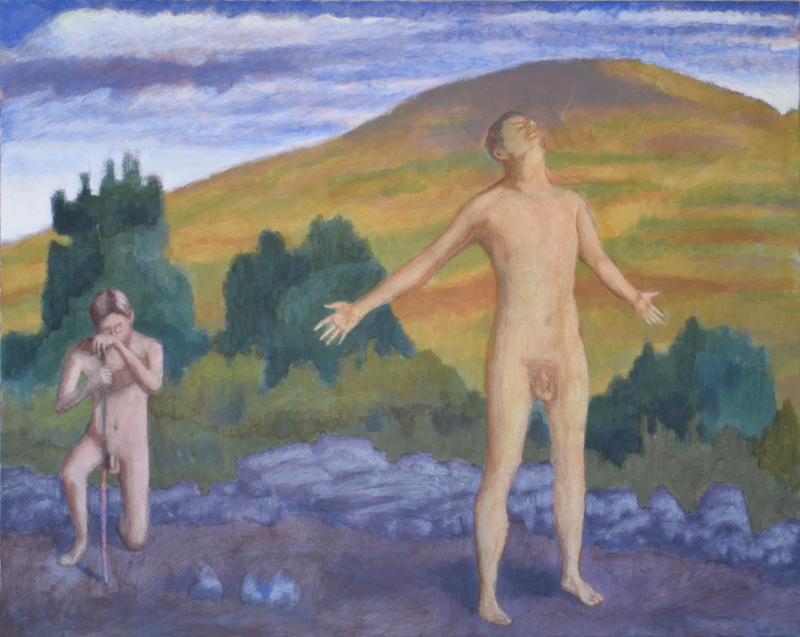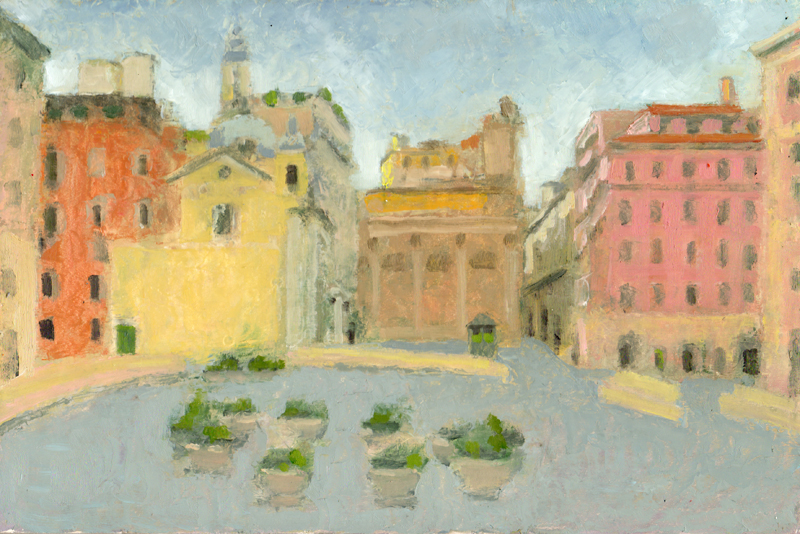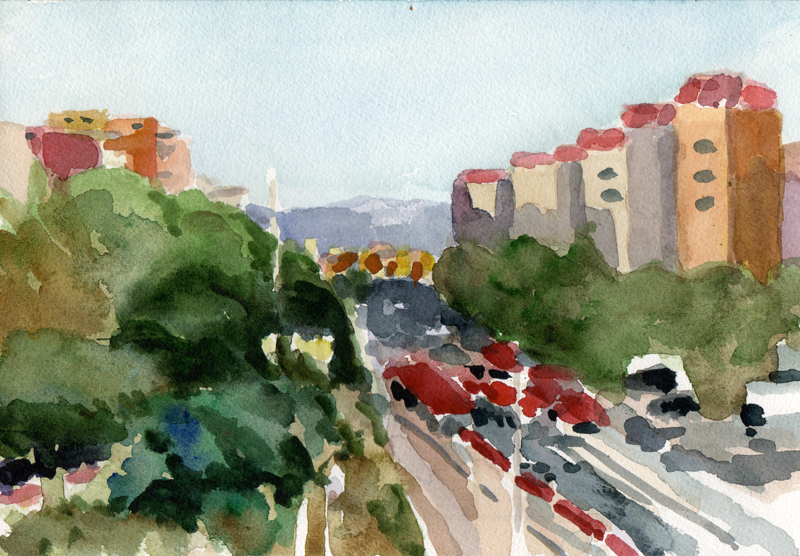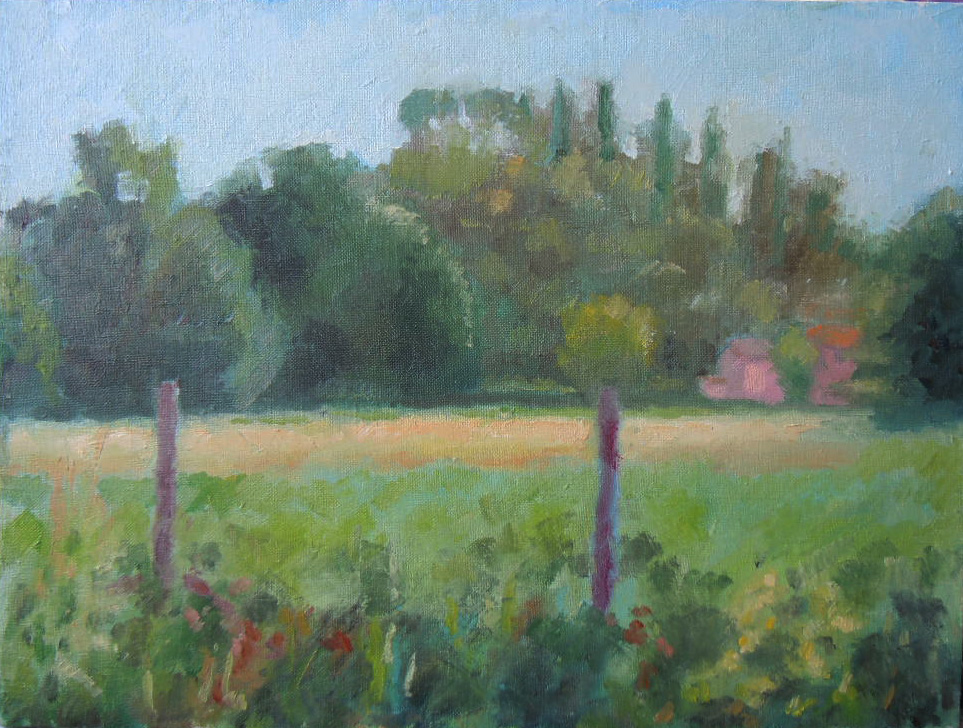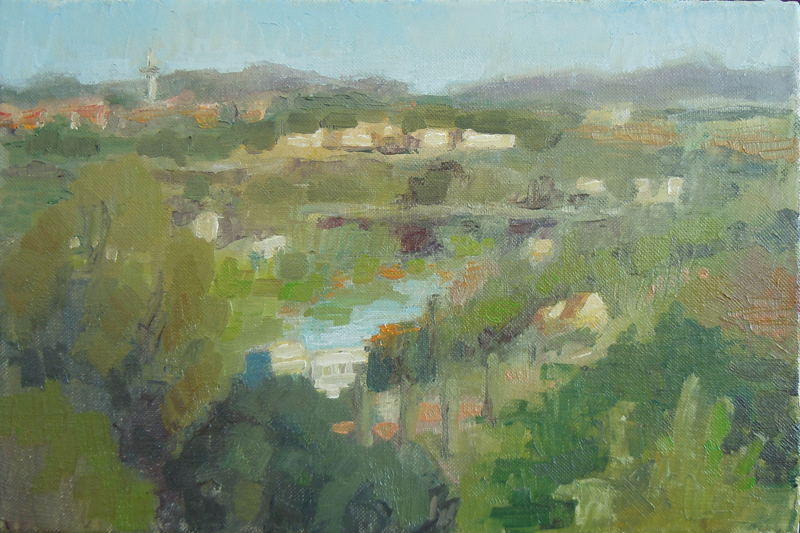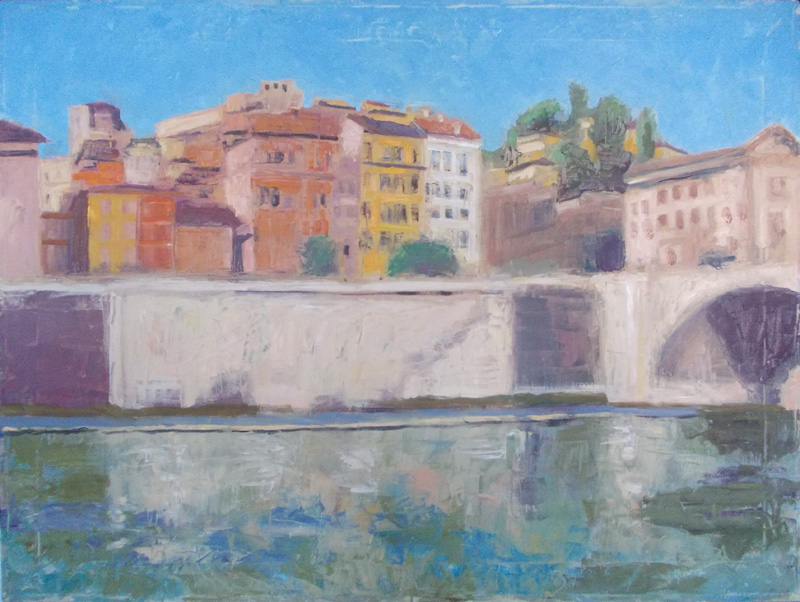
A fine line has been drawn between illustration and ‘Figurative’ painting. Throughout history, painters occupied themselves with the subject of a story. They personalized well-known themes or attempted to ‘chronicle’ (from Greek khronos “time”) an event or story regardless of its reality. The artist’s ability to transcend the subject determined in many cases that paintings impact in the History of Art. Caravaggio’s depiction of Saint John the Baptist is a good example of this. Looking at this painting, I don’t automatically ‘read’ the subject as the protagonist of the well-known biblical stories.
Wikipedia reports that an illustration is a decoration, interpretation or visual explanation of a text, concept or process,designed for integration in published media. According to this definition, it is difficult to distinguish the artistic difference between a Rembrandt print and the printed work of Hogarth, Daumier or Toulouse-Lautrec. This fuzzy line becomes clearer in the 20th century especially during the so-called ‘Painting is Dead’ period when practically any representation of the human figure was considered ‘passé’ because it lowered the artform to simple illustration.
Artists that continue to work with the figure today are aware of the historical baggage that is attached to the genre. In my opinion, the best contributions to the genre today are when the artist is able to blend the abstract quality of nature and the figure with whatever ‘story’ they are trying to recall in the composition. In this way, the formal aspects of the painting transcend the story and become the principle elements.
